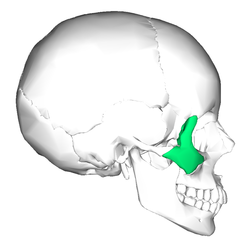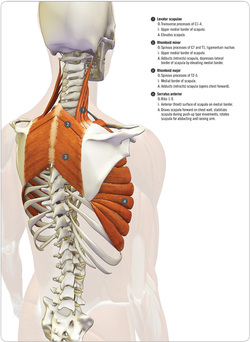 The Zygomatic Bone The Mastoid Process referred to in the article is that little pointed object behind the jaw bone.
The Zygomatic Bone The Mastoid Process referred to in the article is that little pointed object behind the jaw bone. I have begun to write the book on Muscle Release Therapy, MRTh(R) and have begun with the its history. I am a firm believer that in order to truly understand a theory and technique there truly needs to be a history protocol to it. Twenty minutes a day, and hopefully by this time next year we will be ready to publish.
This blog post is about two bony structures that act in conjunction with one another. This is one reason why it is important to understand functional movement patterns when determining pain patterns. The picture is of the Zygomatic bone and its counterpart bone is the Clavicle. The Zygomatic bone acts as a keystone structure of the cranium and in Cranio-Sacral work has a specific release. The Clavicle supports the integrity of the shoulder joint; and that is only the beginning of their commonality.
In your typical Anatomy class you learn regions of the body, in reality there is no escaping that the human body is one entity, controlled by one brain. Although many professions would argue that the suture lines are fused together as we age, I am sure Dr. Sutherland, D.O. and his disciples that teach Cranial Sacral work would disagree as vehemently. Through my many years of developing specific release patterns to aide the dentist and orthodontist help align bite, help with sleep apnea, snoring and occlusion issues, I have found out that by getting movement in the suture articulations good things have happened.
So how do these two structures compare? It is a long story so hang on! One muscle that is common is the Sternocleidomastoid, which as any Massage Therapist will tell you is often a difficult one to get to stay in a neutral or relaxed posture. The common point of attachment is the mastoid process of the temporal bone. It's distal attachments are on the Sternum, or breast bone, and the Clavicle. That is how it gets its name, its points of attachment. It's action is to assist in skull rotation through the interaction of both SCM's.
The Zygomatic bone is basically your cheekbone and helps give your face its symmetry. There is a direct connection to the Temporal bone and any shift in this bone will cause the Temporal bone to become stuck which will neurologically shut down the SCM to prevent injury. When this happens the Clavicle has unnatural tension applied to it and will be rendered immovable. In my practice individuals will often come in with Thoracic Outlet Syndrome, Carpal Tunnel Syndrome, an inability to raise an arm over their head, and chronic upper back pain.
What the therapist must do in this scenario is create a synchronized movement between the two structures. This balancing in tension not only brings about a natural balance between the Zygomatic and the Clavicle but also permits the Temporal bone to become the wobbling wheel it needs in order to help balance normal body movement.
This is a brief description to show how commonality in structures that need to be balanced for proper movement. This is how Muscle Release Therapy, MRTh(R) assesses at the body and how it aides in proper tension on the skeleton. If you have any questions, please feel free to contact us.
We will be offering online continuing education courses that address these type of issues and next fall Angel Velotta will once again present the Muscle Release Therapy, MRTh(R) course. For more information please contact Kathy at [email protected].
From all of us at Chagrin Valley Wellness Center and The Gibbons School of Massage Therapy and Integrated Medicine we wish a Happy Holiday season.
Dennis

 RSS Feed
RSS Feed
